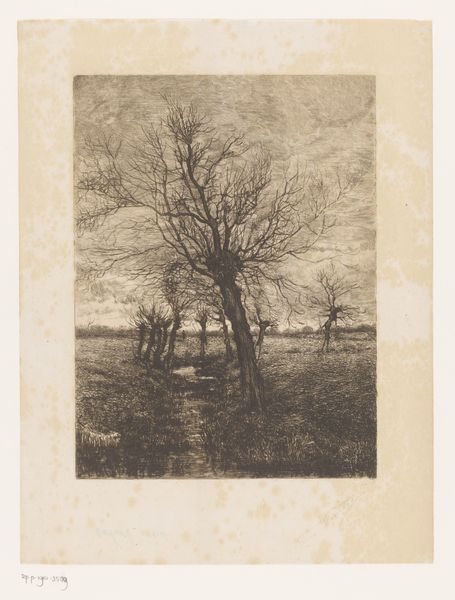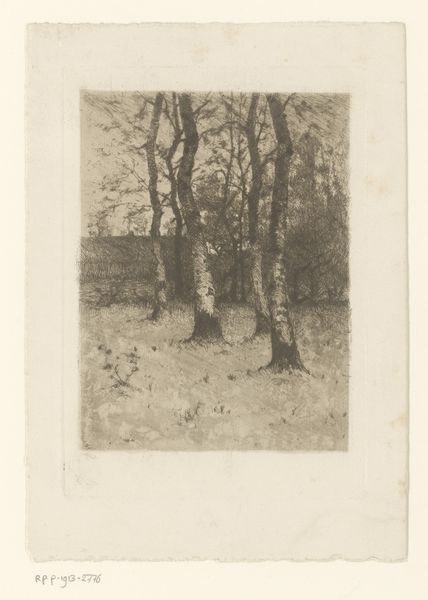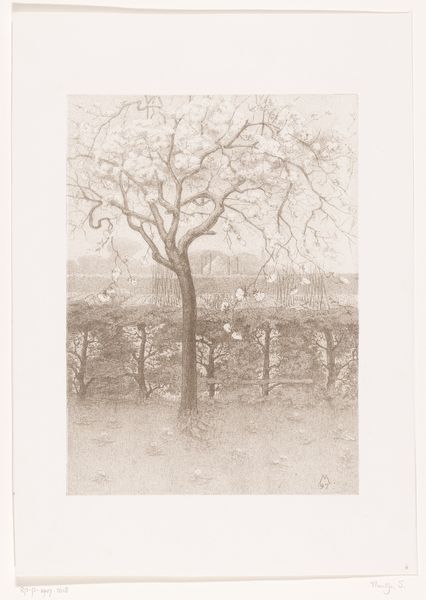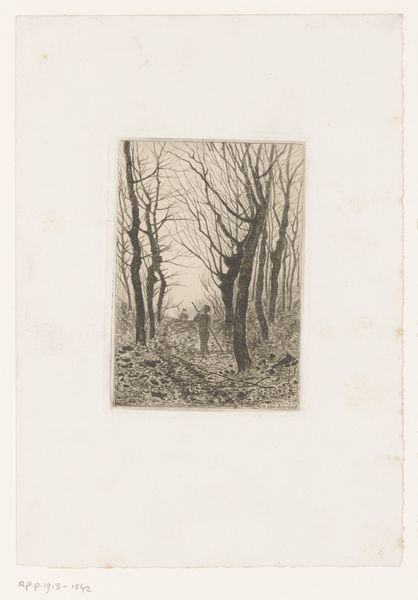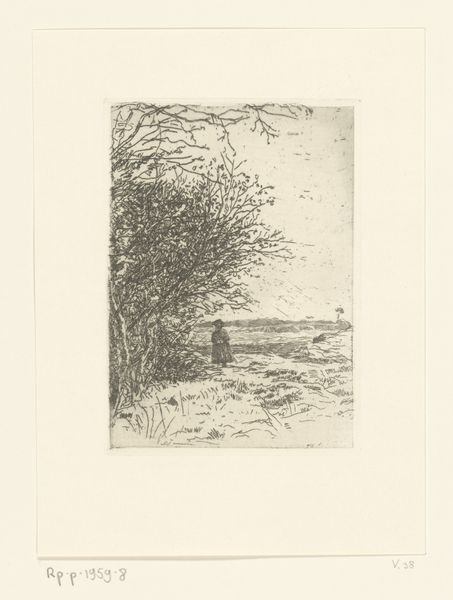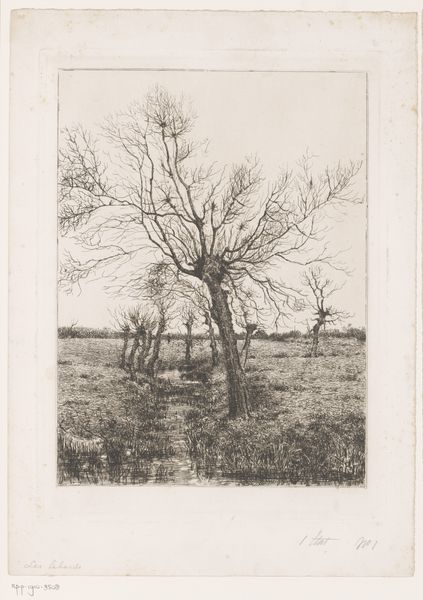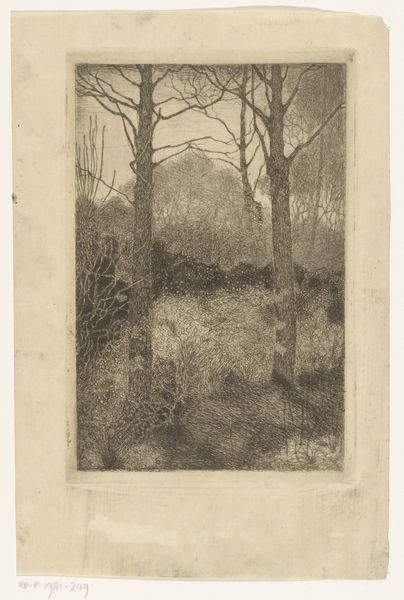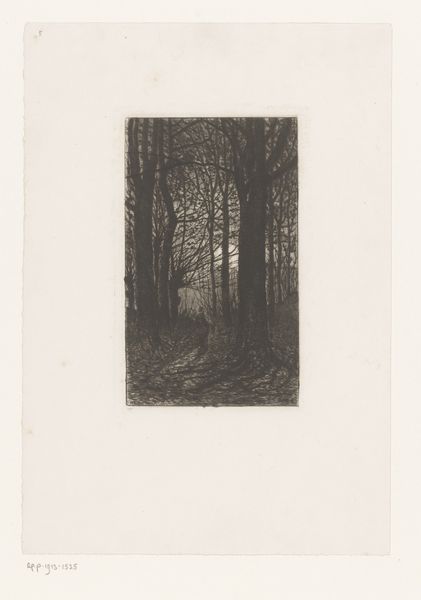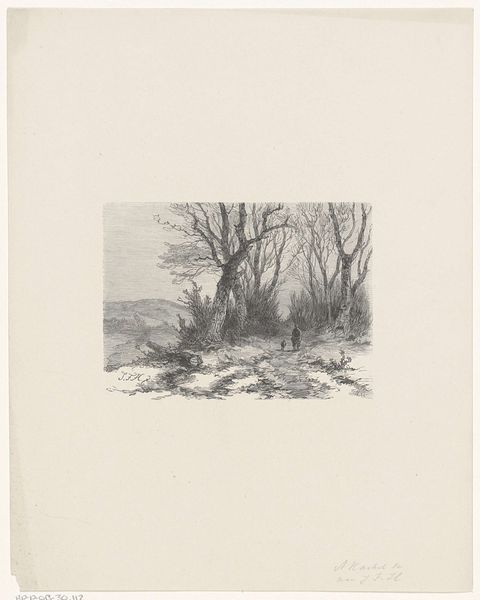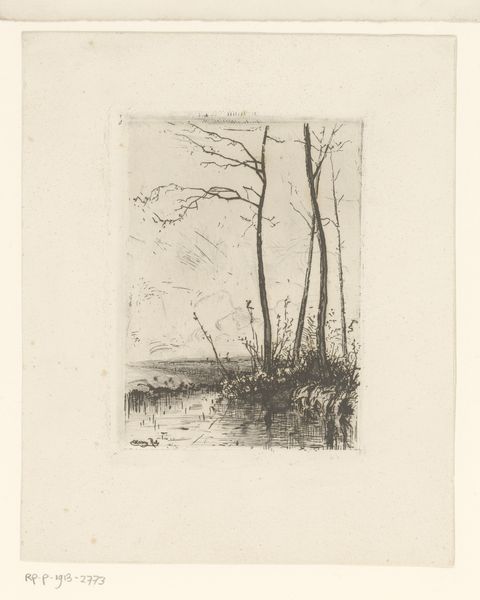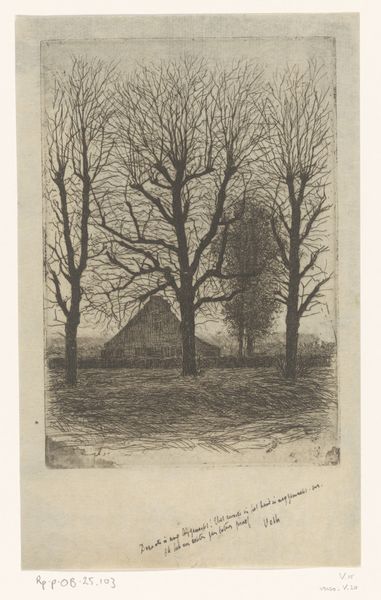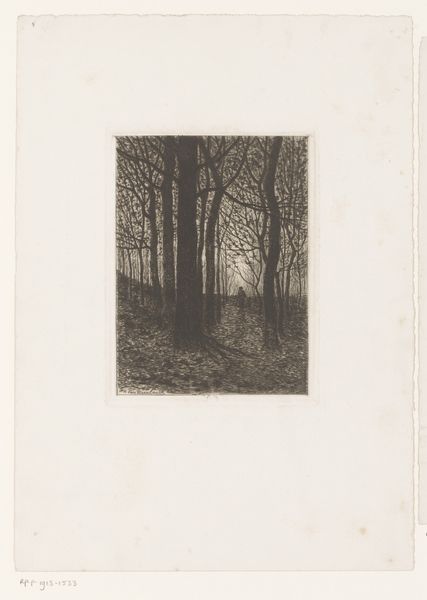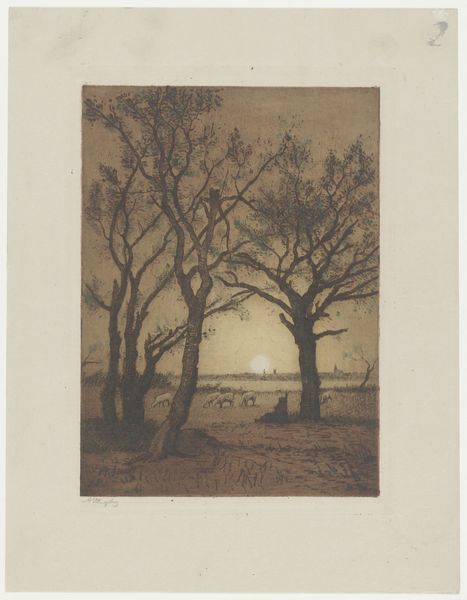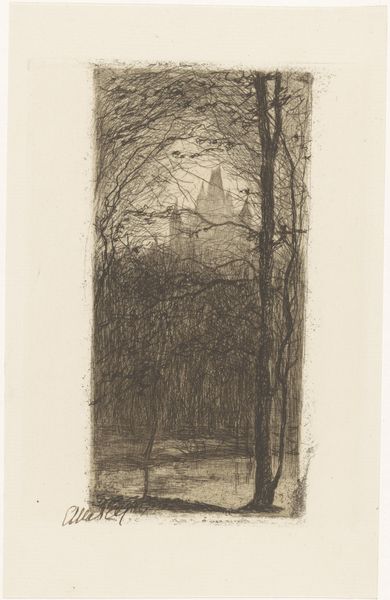
drawing, print, etching, paper, pencil
#
pencil drawn
#
drawing
# print
#
etching
#
pencil sketch
#
landscape
#
paper
#
pencil drawing
#
pencil
#
line
#
realism
Dimensions: height 150 mm, width 102 mm
Copyright: Rijks Museum: Open Domain
Curator: Here we have Frederika Henriëtte Broeksmit’s "Wilgen aan het water," likely created between 1885 and 1931. It’s a landscape rendered through etching, pencil, and print on paper. What strikes you initially? Editor: There’s a haunting, almost ghostly quality to it. The starkness of the trees against that undefined background. And it's small, which makes it all the more intense; you have to come close. The materiality also projects the impression of delicacy, and an embrace of imperfection. Curator: That emotional response is apt. Broeksmit, active during a period of significant social and artistic upheaval, explored themes of isolation and resilience. The wilting willows become metaphors for the female experience of those turbulent years in society. Editor: Yes, willows often signify mourning or sorrow, but their adaptability is often ignored. This speaks to the material circumstances. The pencil work displays economy but reveals much about the limitations, and labor behind creating such delicate objects using basic materials. It asks what's lost, and gained. Curator: Precisely. Moreover, we must consider the landscape as a gendered space. Traditionally, women artists were relegated to still life and portraiture. Broeksmit, by focusing on nature, carved her own space for creative and social commentary within her constraints. This drawing speaks to women taking up spaces not initially given to them. Editor: I also see an intriguing duality in the line work. Deliberate choices, a crafted piece for the market but a sketch like immediacy. You almost feel her hand at work with a raw pencil, testing grounds or developing forms - a work of the artist coming to grips with its environment, as much as her. Curator: The raw, skeletal lines can indeed be interpreted as representative of her drawing, and therefore living, conditions in the margins of her society. Her commitment shines through as both social commentary and also hope for change, though somber at first glance. Editor: Ultimately, I am left considering the value in these quiet expressions – made from modest elements available to the artist. How much history can one express without having access to more resources? Curator: An important question to consider and, I think, that’s what makes Broeksmit’s "Wilgen aan het water" a compelling work even today. Its impact lies not just in what we see but what it evokes and challenges us to think about through historical perspectives.
Comments
No comments
Be the first to comment and join the conversation on the ultimate creative platform.
